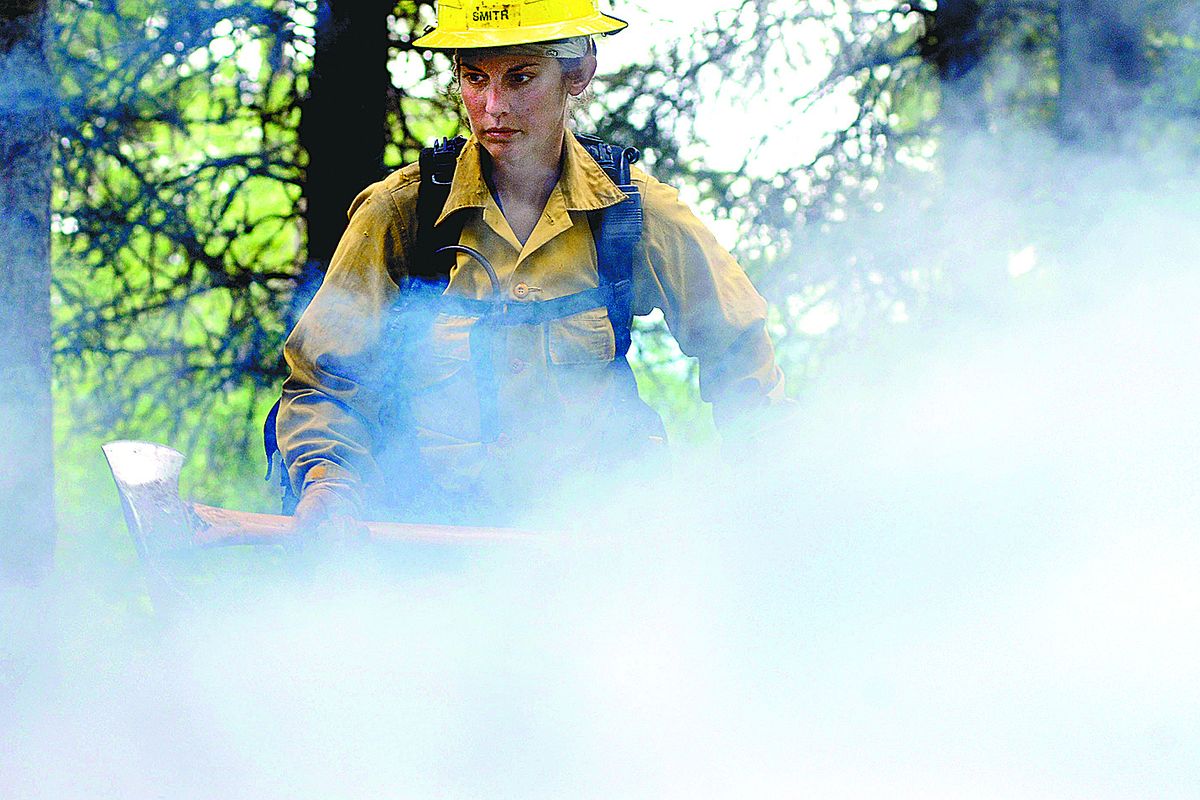Fire season forecast elusive
Weather factors keep land managers guessing

You might think you know what kind of fire season is in store for the Inland Northwest. You figure the snowpack was 50 percent of normal around much of the region. Oooh, that’s bad.
Then you factor in above-average rainfall for the past couple of months. That’s good, right? Well, it increases moisture content but also spurs the growth of grasses, which fire behavior analysts call “fine fuel.”
Then you account for normal temperatures anticipated through the summer but below-normal precipitation and come up with…
Who knows?
Those who fight the fires and those who analyze fire behavior have one thing in common when it comes to predictions – they’re not crazy about making them. What it comes down to, they say, is the weather and activity that occurs during fire season itself. That includes the dryness of the trees and grasses, the number of lightning strikes and human behavior. Examples of good human behavior are fully extinguishing campfires and not tossing lit cigarettes.
“It’s really hard to predict. It’s all about seeing what’s really going to happen,” said Stacy Smith, a seven-year U.S. Forest Service firefighter stationed at the Priest Lake Ranger District.
“There have been an awful lot of years that we have had an awfully wet spring and still had … an active fire season. Then there’s been some years where there’s been a wet spring and not much of a fire season,” said Don Wagner, a fire behavior analyst with the Idaho Department of Lands in Coeur d’Alene. “I don’t think we can make a prediction at this point. What it really boils down to is the summer temperatures and precip during late June, July and August.”
And even with no rain, and hot, dry weather, “it still takes a start,” said Josh Harvey, a 13-year firefighter and the assistant fire warden with the Department of Lands in St. Maries.
Of course, predictions are still made. The National Interagency Fire Center in Boise’s predictive services center puts out monthly reports analyzing weather patterns and estimating what that might mean for the fire season.
The center’s June 1 report predicts above-normal fire potential in the Northern Rockies, including North Idaho, from mid-July to August, with near-normal temperatures and below-normal precipitation. In the Northwest sector, which includes Eastern Washington, above-normal danger is anticipated for extreme northern and eastern Washington during the same time period.
“The predicted summer climate pattern may lean towards lightning activity in Okanogan region of north-central Washington and therefore a higher likelihood of significant fire potential,” the June 1 report says. “Elsewhere, some spikes in large fire activity are expected during the summer fire season, especially in the drier regions of southeastern Washington and south-central Oregon.”
The cool spring with above-normal precipitation likely will delay the anticipated late-June start to the fire season, said John Saltenberger, a fire weather program manager with the Northwest Interagency Coordination Center in Portland, which represents Oregon and Washington. The 11 federally funded coordination centers organize the movement of firefighters around the region when a fire gets too big for local staff to handle.
Saltenberger has spent 20 years predicting fire behavior and said so far this year he doesn’t see anything particularly alarming for this region. The warm, dry winter was cause for concern, he said, but since then conditions have eased.
“We had a very wet April and May. We caught up in terms of snow deficiency and rain deficiency,” he said. “I am not particularly concerned that the Northwest is going to be a drain on firefighting resources. We ought to be able to handle the fires we get.”
The lower snowpack doesn’t matter as much as how long snow sticks around, Saltenberger said. Fire season starts earlier when snow melts earlier, he said.
And while the spring’s wet, cool weather has kept the ground moist, it has also spurred more plant growth, said Matt Castle, a fire behavior analyst with the Washington Department of Natural Resources in Spokane.
“We’re estimating that our fuel loads are up there a little bit because our grasses have grown nice and tall,” Castle said. “I anticipate if the forecast comes true … by the middle of July our fire danger should be climbing up there.”